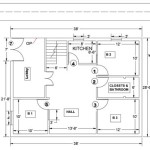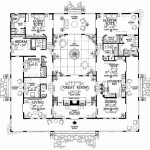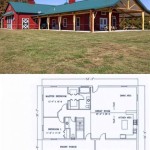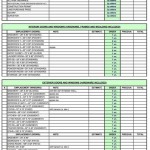The article should be written for homeowners who want to find the original building plans of their house.
How To Find The Building Plans For Your House
Locating the original building plans for a house can be invaluable for homeowners. These plans can assist with renovation projects, help resolve property disputes, and provide a historical record of the structure. While finding these plans might require some effort and persistence, there are several avenues to explore.
Understanding the Value of Building Plans
Before embarking on the search, it's crucial to recognize the potential benefits of possessing the original building plans. These documents contain detailed information about the house’s construction, including structural elements, plumbing and electrical layouts, and the original dimensions. This knowledge is especially helpful when planning renovations or extensions. Knowing the location of load-bearing walls, the placement of electrical wiring, and the routing of plumbing lines can prevent costly mistakes and ensure the safety of any construction work. Furthermore, building plans can be instrumental in resolving property line disputes. They can clarify the boundaries of the property and the placement of structures, which can be helpful in cases of encroachment or boundary disagreements. In some instances, building plans can also increase the value of a property, demonstrating due diligence and transparency to potential buyers.
Access to these plans can also be vital in the event of natural disasters or structural failures. Knowing the original construction details can expedite the process of assessing damage, filing insurance claims, and planning necessary repairs. Finally, for homeowners interested in the history of their house, original building plans can provide valuable insights into the design trends and construction practices of the era in which the house was built.
Exploring Local Government Archives
The most common and often most fruitful place to start searching for building plans is the local government. Specifically, the building department, city hall, or county records office are all potential repositories of these documents. These government entities are responsible for approving and maintaining building permits, which often require the submission of detailed construction plans.
The process typically begins with contacting the relevant department, usually the building department or planning department, and inquiring about their record-keeping procedures. Many municipalities have digitized their records, allowing for online searches. These online databases usually allow searches using the property address, owner's name, or the original permit number. However, accessibility to online records varies widely. Some municipalities may offer comprehensive online databases, while others have limited or no digital access.
If online access is unavailable or yields no results, a visit to the physical records office may be necessary. The staff can guide the search through physical archives, which may include paper files, microfilm, or microfiche. Be prepared to provide as much information about the property as possible, including the address, the year the house was built (if known), and any previous owner information. It is also important to understand how the records are organized. Some departments organize records by address, others by permit number, and still others by the year of construction. Understanding this organization will greatly speed up the search. Furthermore, some records may be stored off-site, requiring advance notice to retrieve them. Make sure to clarify the retrieval process and any associated fees before beginning the search. It is also crucial to understand the department's policy regarding the reproduction of documents. Most departments allow for copying or scanning of records, but there may be restrictions or fees involved.
It is important to note that the availability of building plans in local government archives can vary considerably depending on the age of the house and the record-keeping practices of the municipality. Older houses may have been built before the establishment of standardized building permit procedures, or their records may have been lost or destroyed over time. In some cases, only portions of the original plans may be available, such as the foundation plan or the elevation drawings. Even partial plans can provide valuable information.
Contacting the Original Builder or Architect
Another potential source for building plans is the original builder or architect of the house. If the house is relatively new, or if the builder or architect is still in business, they may have retained copies of the plans. This approach can be particularly useful if the house was custom-built or designed by a specific architect.
However, locating the original builder or architect can be challenging, especially for older homes. Public records, historical societies, and local business directories can provide clues. Online searches, including professional networking sites, can also be helpful in identifying potential contacts. If the builder or architect is deceased or no longer in business, their firm or estate may still possess the plans.
When contacting the builder or architect, be prepared to provide as much information about the house as possible, including the address, the year it was built, and any known details about the original construction. They may also require proof of ownership before releasing the plans. It's important to understand that the builder or architect may charge a fee for providing copies of the plans, especially if they need to retrieve them from storage or convert them to a digital format. Furthermore, they may have intellectual property rights over the plans, so it's essential to obtain permission before making any modifications or distributing them.
If contacting the original builder or architect proves unsuccessful, consider reaching out to local historical societies or architectural associations. These organizations may have records of local builders and architects, or they may be able to provide leads on where to find building plans for older homes. Local libraries often have archives of historical documents, including architectural drawings and building specifications.
Exploring Other Potential Sources
Beyond local government archives and the original builder or architect, several other sources can be explored to find building plans. These include previous homeowners, mortgage lenders, and insurance companies.
Previous homeowners may have retained copies of the building plans from their own construction or renovation projects. Contacting them can be a long shot, but it's worth considering, especially if the house has only had a few owners. Real estate agents or neighborhood associations may be able to provide contact information for previous owners. Be mindful of privacy concerns and respect the previous owners' rights when making contact.
Mortgage lenders may have copies of the building plans as part of their loan documentation process. When a house is built or undergoes significant renovations, lenders often require detailed plans to assess the value of the property and ensure its compliance with building codes. Contacting the mortgage lender who financed the original construction or any subsequent renovations may yield results. However, lenders are often subject to strict privacy regulations, and they may require proof of ownership and a valid reason for requesting the plans before releasing them.
Insurance companies may also have copies of the building plans, particularly if the house has been subject to significant damage or renovations. Insurance companies often require detailed plans to assess the risk of insuring a property and to process claims related to structural damage. Contacting the insurance company that currently insures the house or any previous insurers may be helpful. Similar to lenders, insurance companies are subject to privacy regulations and may require proof of ownership and a valid reason for requesting the plans.
Finally, consider searching online databases and architectural plan repositories. Several websites specialize in providing access to architectural plans and historical building documents. These databases may contain plans for houses in specific regions or architectural styles. However, accessing these plans may require a subscription or a one-time fee. Exercise caution when using online sources and verify the authenticity and accuracy of any plans before relying on them for construction or renovation projects.
Persistence and thoroughness are key to successfully finding the building plans for a house. It may require contacting multiple sources, visiting several archives, and spending considerable time searching through records. However, the potential benefits of possessing these plans make the effort worthwhile. Accurate building plans can save time and money, prevent costly mistakes, and provide valuable insights into the history and construction of the house.

9 Ways To Find Floor Plans Of An Existing House Blueprints Archid

How To Find Building Plans For My House Architecture Design Plan

9 Ways To Find Floor Plans Of An Existing House Blueprints Archid

Building Plans For Your House My Modern Architects Upwork

New House Plan Checklist Expert Tips Ibuildnew

Building Plans Examples Inhouseplans Com

Home Designs For Your Block S Orientation Geelong Homes

Building Your Dream Home How To Find The Right Floor Plan For You

Building Plans For Your House My Modern Architects Upwork

How To Find Floor Plans Blue Prints Of Your House
Related Posts








